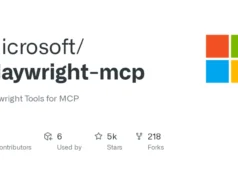FormThief is a project designed for spoofing Windows desktop login applications using WinForms and WPF. Below is an example run for KeePass
Windows Forms (WinForms) and Windows Presentation Foundation (WPF) are two powerful UI frameworks provided by Microsoft for building desktop applications on the Windows platform.
While they are primarily used for developing software, they also offer a unique opportunity for spoofing login functions for legitimate Windows desktop applications.
The idea behind this was to identify desktop applications used by the target organisation, tailor a malicious forms application to the specific victim, then load the spoofed login application via beacon to capture user credentials.
I’m working on several others and will keep adding to this repo. Bitwarden is nearly finished; however, I encountered limitations with WinForms when replicating Bitwarden and LastPass. I will be porting both to WPF as soon as possible.
Improvements could be made to incorporate greater application functionality, I’ve only attempted to replicate the processes necessary to capture user credentials.
If users are persistant in trying to access other areas of the application I’ve added click counters which will trigger an exit or ‘crash’ the app so the victim doesn’t become too suspicious when things aren’t working as they normally would.
Prereqs
Information on application process executables, prereqs for creating convincing dialogs, and example attack vectors:
| Application | Executables | Prereqs | Example Attack Vector |
|---|---|---|---|
| Cisco AnyConnect | vpnui.exe/vpnagent.exe | procsearch ui process for “Connected”, should show ‘Connected to xyz…’ . An XML file located in C:\ProgramData\Cisco\Cisco AnyConnect Secure Mobility Client\Profile\ should also contain available hostnames/gateways for the host | Identify the current connection gateway -> kill process -> pop new auth dialog with identified gateway |
| KeePass | KeePass.exe | Identify any .kdbx files on the host (trying to dump the active .kdbx db with procsearch fails) | Kill process -> pop new auth dialog with .kdbx file path |
| LastPass | lpwinmetro.exe | procsearch LastPass process for “email” to identify active email address | Kill process -> pop new auth dialog with identified email |
| OpenVPN | openvpn.exe | procsearch OpenVPN process for “.ovpn” to identify active profile | Kill process -> pop new auth dialog with target VPN profile |
| Windows Security (Outlook) | OUTLOOK.exe/olk.exe | procsearch Outlook process for “email” to identify active email address | Kill process -> pop new auth dialog with extracted email |
Functionality within the included applications is fairly modular so it can be easily copy/pasted when creating new forms. Several items in proctools, which was created whilst working on this project, may also come in handy.
Usage
Clone the repo. Load the target application solution. Allow unsafe code and untick Prefer 32-bit. Build.
All applications except Windows Security (Outlook) work via inlineExecute-Assembly and bofnet_executeassembly.
I’ve inlcuded a simple C# script (wpfRunner.cs) for downloading the WPF Outlook.exe to the victim’s %TEMP% and executing directly from the host, not ideal but it works fine. Will update with a workaround.
NOTE: Only tested on Windows 10, NOT tested on Windows 11
All code confirmed working locally and via beacon at time of release. Please don’t hesitate to reach out with any issues or contributions.

















.webp)








.webp)
.webp)